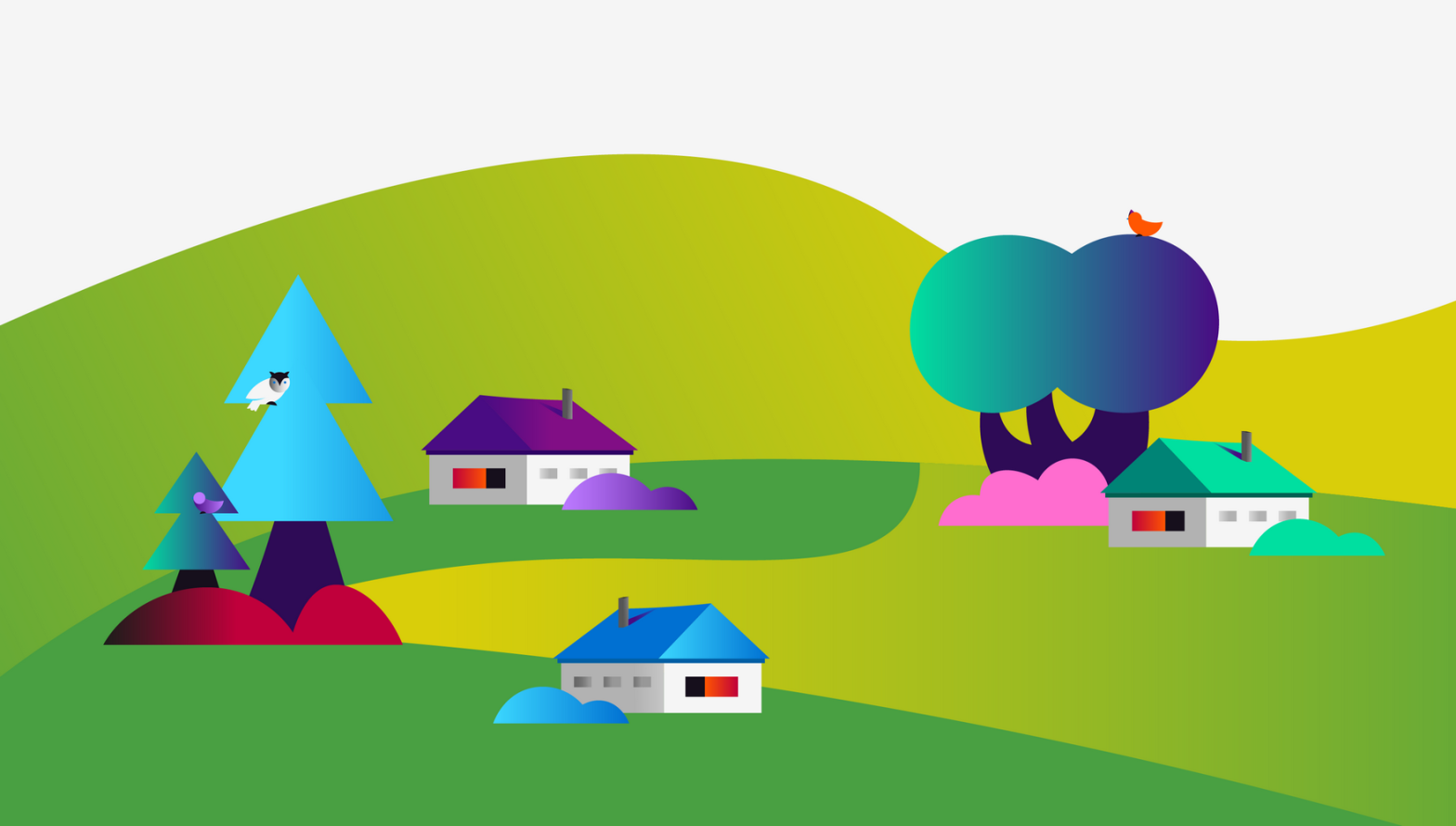
|
How to leverage online and offline marketing?
One of the important steps that ensure business growth is developing a marketing strategy that uses the most effective combination of online and offline activities for your specific product and business goals. When it comes to reaching certain objectives, some options have distinct advantages and work better. In this article we will cover pros and cons of online and offline marketing, explain most effective tandems of traditional and digital channels and discuss the most accurate measurement tools.
Online and offline marketing channels
Both online and offline marketing can be effective for reaching potential customers, but the choice of which to use often depends on the type of product or service being promoted, the target audience, and the budget available for marketing. The main difference between offline and online marketing is the medium used to reach the audience. Online marketing refers to the promotion through search engines, social media, websites, mobile apps, and other online media. Offline marketing refers to traditional forms of advertising that don’t involve the internet. For example, print ads in magazines or newspapers, billboards, radio and TV commercials, and direct mail campaigns.
Examples of online marketing and its strengths
- Online customer journey is easily trackable because there are many tools that monitor performance metrics of online ads. However privacy regulations are a serious obstacle for such tools, you can read more on that in the paragraph about performance measurement.
- Online ads are flexible and can be adjusted mid-campaign unlike offline ones that are usually agreed upon and fixed in media deals way in advance.
- Online advertising allows for a high personalization level.
Let’s look at some online advertising options and explore how to utilize them more effectively:
Search engine optimization (SEO): Optimizing your website to rank higher in search engine results and attract more organic traffic. To turn your site into an ideal sales tool, generate valuable SEO-optimized content, as well as ensure the website is user-friendly and mobile-responsive.
Pay-per-click advertising (PPC): Creating and running advertisements on search engines and social media platforms, where you pay each time someone clicks on your ad. These ads work best when there’s already strong brand awareness, so it’s wise to pair them with wide-reaching channels to yield optimal results.
Content marketing: Creating and sharing valuable, relevant, and consistent content to attract and retain a target audience and drive profitable customer action. It can also establish a brand as a thought leader and increase brand awareness.
Social media marketing: Promoting your brand and engaging with your audience through social media platforms. Instagram is the best choice to focus on visually captivating content. LinkedIn is optimal for B2B marketing due to its focused professional network.
Email marketing: Sending promotional emails to a list of subscribers to drive sales, engagement, and build customer loyalty. Here we dispel four myths about email marketing.
Influencer marketing: Partnering with influencers in your industry to promote your brand and reach a larger audience. It’s a simplified approach to reaching your desired audience segment, leveraging the loyal and attentive followers of influencers.
Examples of offline marketing and its strengths:
- Traditional channels especially TV and OOH ensure high reach and are great tools to build brand awareness.
- Offline events allow brands to establish more personal relationships with customers.
- It boosts the influence of your digital ads.
Here are some examples of offline marketing activities:
Print advertising: Placing ads in newspapers, magazines, or other print publications allows brands to reach specific target audiences or demographics.
Direct mail: Sending promotional materials such as flyers, brochures, or catalogs directly to the homes or offices of your target audience.
TV and radio commercials: Creating and airing commercials on television or radio to reach a large, broad audience. This option offers extremely wide reach and helps to strengthen brand awareness.
Billboards: Placing ads on large outdoor structures such as billboards or transit signs to reach a large, captive audience. OOH is another ad option with high reach that increases brand awareness.
Event marketing: Hosting or sponsoring events, such as trade shows, product launches, or community events, to promote your brand and reach potential customers.
Public relations: Building relationships with journalists and media outlets to secure positive coverage of your brand and products.
Trade shows and exhibitions: Participating in trade shows and exhibitions to showcase your products and meet potential customers face-to-face. It will also establish a brand as a thought leader.
These are just a few examples of online and offline marketing, and the best choice for your business will depend on your goals, target audience, and available resources.
Are digital marketing and online marketing the same?
While digital marketing and online marketing share similarities and occasionally intersect, they are not synonymous. Online marketing is a subset of digital marketing, encompassing strategies specifically conducted over the internet, such as website ads and social media campaigns, whereas digital marketing encompasses a broader spectrum, including offline digital channels like electronic billboards or digital displays in physical spaces.
Case study
Of course today’s marketing mix includes various types of channels including online and offline ones because it’s easier to reach customers this way. But another advantage of combining some online and offline marketing channels is that together they create a powerful synergy increasing the influence of one another. Let’s look at a case study that demonstrates such an effect.
A car insurance marketplace was created late in 2020. The marketing team decided to promote the service using among others performance channels (contextual and search advertising) but they didn’t include in the mix two main offline channels (TV and OOH). Conversion rate of performance ads in initial campaigns was only 3.3%.
In an attempt to enhance marketing performance a test TV and OOH flight was launched in May 2021. This mix optimization led to 0.8% increase in performance conversion rate. The positive dynamic proved the effectiveness of this combination and a few more flights of TV and OOHwere included in their campaign in September-October 2021. This time the result was even better, and by December 2021 conversion rate reached 7.2%.
Using this combination of channels the brand increased the conversion rate by almost three times over the following year compared to initial figures. In autumn 2022 it was 11.6%.
These calculations were made with marketing mix modeling tools, they can actually measure such changes in effectiveness and attribute them to specific channels. This information allows for an effective planning of future campaigns and optimal budget allocation. Here are three advanced MMM solutions, along with a detailed comparison of their capabilities and implementation options.
The synergistic effect happens because reach ads drive search traffic. TVand OOH are channels that have extremely high reach and are guaranteed to be seen by lots of people. It allows to quickly and easily build brand awareness, which in its turn drives conversions in performance channels. And later on when people are shopping around, they see a familiar brand and are more likely to choose it. Some people will even intentionally make search queries. Such brand queries cost less than general queries so they reduce marketing expenses.
Online and offline media as a part of a go-to-market strategy
Finding the right combination of online and offline media plays a defining role in promoting a new product or launching an existing one to a new market. Since there is no statistical data yet to support your decisions, brands can use metamodeling to develop a data-driven GTM strategy.
A meta model is an analytical tool that allows you to use the experience from another case similar to yours in terms of industry, business model, market size and other important factors.
If you want to get a go-to-market strategy with recommendations on the optimal media mix in five minutes, try our free AI service.
You just need to start a dialogue with our chatbot and answer 5 questions about your industry, market size, media budget and other information necessary for calculations. The analysis will show if the planned budget is enough for you to successfully execute the GTM strategy and reach the target KPI. You will also get an industry specific optimal mix of online and offline channels.
Performance measurement for online and offline marketing channels
Marketing attribution is a tool that allocates value to the touchpoints encountered throughout a customer’s journey. Opting for multi touch attribution is beneficial as it prevents placing excessive importance on just the first or final touch. Nevertheless, it might overstate the role of digital ads and neglect offline interactions. Complicating matters further are the evolving landscape of data privacy regulations, gradual elimination of third-party cookies, and the introduction of new privacy settings in iOS 14.5. Consequently, the ability to effectively track an entire customer journey is progressively becoming more elusive.
Marketing Mix Modeling is a tool that can effectively measure the performance of both online and offline marketing activities. It is also privacy friendly and complies with regulations such as GDPR, etc. The main advantage of the tool is that it measures not only the contribution of each channel to business KPI, but also their influence on one another. It helps businesses optimize their media budget allocation to ensure that they don’t waste money on inefficient channels and invest enough into the channels that still have growth potential. Looking at a campaign’s results as a whole is the only right thing to do if you want all the calculations to be accurate.
Conclusion
Even though we are shifting to a digital era, offline marketing is still used on the par with traditional channels for effective promotion of goods and services. With advanced analytical tools you can know exactly how to distribute budget across online and offline channels in your media mix to drive sales and reduce customer acquisition cost.



